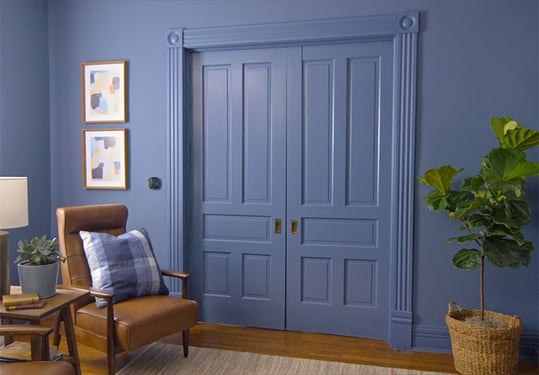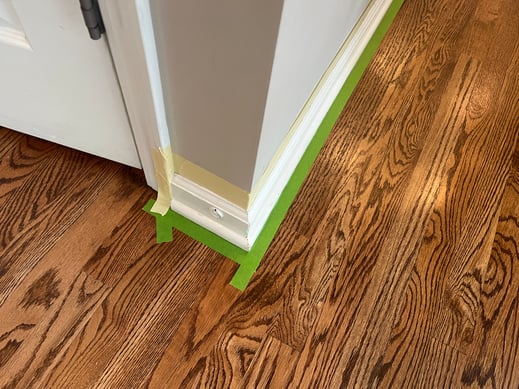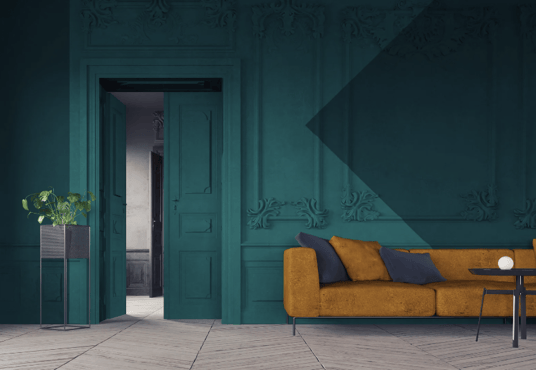-4.png?width=800&height=418&name=Blog%20Post%20Image%20Size%20(6)-4.png)
-4.png?width=800&height=418&name=Blog%20Post%20Image%20Size%20(6)-4.png)
July 21st, 2023
3 min read
-4.png?width=800&height=418&name=Blog%20Post%20Image%20Size%20(6)-4.png)
Are you ready for an interior paint refresh, but just aren’t sure exactly how to switch things up?
Painting walls and trim the same shade is a fairly common trend, but before you decide if it’s the right look for you, it’s important to weigh the pros and cons. You must be confident through every decision in your interior painting project, so you don't make any mistakes.
At Brush & Roll Painting, an interior home painting company in Omaha, NE, we help our customers transform their dream homes into reality with paint. We know just how important the right colors are, so we offer color consultations for interior painting projects, to ensure your project looks flawless.
This article will highlight the good and the bad of painting your walls and trim the same color, as well as give you a better understanding of what design trend to incorporate for your next interior painting project.

Considering the walls, accent walls, baseboards, window trim, ceilings, and door trim can be overwhelming. Doing one solid color can help put those worries to rest and focus on other elements.
With the same shade on walls and trim, you will open up an opportunity to make other features stand out—lighting, furniture, a colored ceiling, rugs, etc.
The wall and trim color can be a base for the rest of the space. Doing a white or light color with the walls and trim would allow you to use a full-color palette in other ways of the room.
On the other hand, having a bold or darker color as a shade for the walls and trim could be an eye-catching statement. With lighter-colored furniture and decor, the options are endless for a unique and personalized space.
If walls and trim are getting painted the same color, masking may not need to be done at all. This will cut a little bit of time in the prep work process.

The main purpose of masking is to catch any splatter from a paint roller or brush, in addition to having crisp lines. It is useful when you have two different shades next to each other.
Check out the other key steps and the importance of proper prep work for interior painting.
As the vertical surface in the space is all the same shade, this will allow it to feel more open.
This airy feeling may be better for small rooms or if you want to feel like you have more space.
Two shades will define the trim and the walls, this probably won’t make the room feel smaller, but more accurate to its size.
Picking one shade may make the process of picking a color easier. Instead of matching tones, you can choose one shade you love.
The walls and the trim will look seamless together and gives an effortless look, which can be relaxing.

In a room with the same colored walls and trim, one won’t stand out too much from the other. This can be a positive factor for some people who want to make other elements stand out, but it’s not for everybody.
Both walls and trim are a great way to add some personality to the room with color. Different tones can enhance the personality factor as you can play with combinations that suit you.
Walls and trim that are painted the same color can almost look 2 dimensional. Like a flat surface with no detail.
A lighter color trim can add a surprising amount of dimension to a space. When walls and trim are painted the same color, they blend and the features go unnoticed.
-3.png?width=538&height=281&name=Blog%20Post%20Image%20Size%20(7)-3.png)
Because the woodwork in your home is a different material than the drywall, two different products will need to be used.
This means that even though the paint for the walls and the trim are the same shade, you will still need to pay the price for two different paint products.
Woodwork paint is stronger and more durable for wooden areas like door frames and baseboards that experience more wear and tear than a normal wall surface. For walls, you can opt for a higher-quality interior paint product which is intended for interior walls.
You could get away with the same paint product for walls and baseboards for lower-traffic areas. This might be a guest bathroom or closet. Areas that won’t have as many harmful factors.
Check out the real difference between low vs high-quality interior paint products.
All in all, painting the walls and trim the same color is a personal style choice. It has many pros, but some could lean more toward the cons. But it is no secret that the same shade for walls and trim could be just what a space needs for a unique and personalized transformation.
At Brush & Roll Painting in Omaha, NE, we know how important the right color is. We recommend having a color consultation with a certified color consultant or designer to be confident in all of your color decisions.
When it comes to paint color and design in your home, its crucial that you are confident in your decisions. Click the button below to get your color and design guide that will help you find the best color for your next project.
If you're not ready to dive into your project too far, check-out the latest color trends to spark more inspiration for your project.
Kaylea is the Brush & Roll Painting Content Manager. Kaylea is a Journalism and Media Communications summa cum laude graduate with a minor in Marketing from the University of Nebraska at Omaha. Kaylea manages the marketing for Brush & Roll Painting.